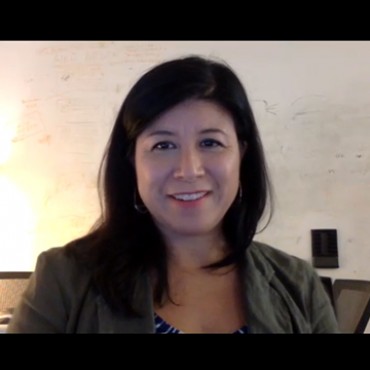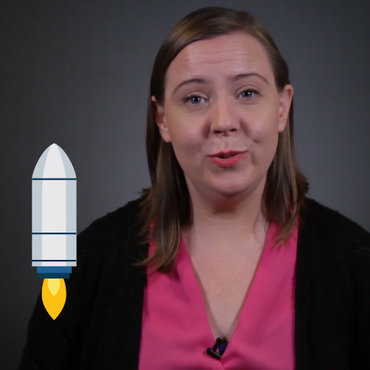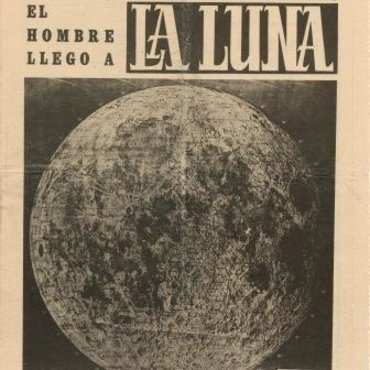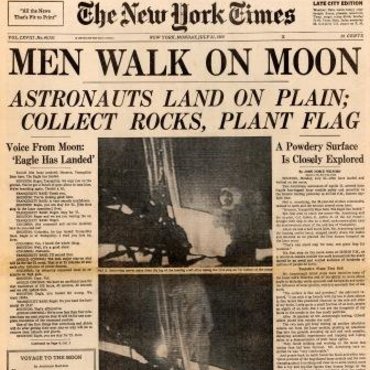
Lesson Plan
Fake News Through History: Analyzing Historical Sources
Fake news is not a new phenomenon. In this activity, students use the E.S.C.A.P.E. strategy to closely analyze a historical source, shedding light on media shortcomings of the past and drawing comparisons to present-day challenges.
Get even more great free content!
This content contains copyrighted material that requires a free NewseumED account.
Registration is fast, easy, and comes with 100% free access to our vast collection of videos, artifacts, interactive content, and more.
Sign Up
?
NewseumED is provided as a free educational resource and contains copyrighted material. Registration is required for full access. Signing up is simple and free.
With a free NewseumED account, you can:
- Watch timely and informative videos
- Access expertly crafted lesson plans
- Download an array of classroom resources
- and much more!
Duration
30-60 minutes
Topic(s)
- Current Events
- Journalism
Grade(s)
- 6-12
- In advance, review the gallery of historical sources below and prepare access to/copies of example(s) of contemporary fake news.
- Ask students if they’ve heard discussions about fake news and define this term as a class. Be sure to define it clearly as false/invented/made-up news – NOT simply news that contains a mistake, news that is biased or news that someone doesn’t like. Explain that fake news is getting a lot of attention now, but it is not new.
- Hand out the Fake News Through History worksheets and assign students one of the historical sources in the gallery on this page to analyze. They may work in teams, pairs or individually. You may choose to go over the E.S.C.A.P.E. Junk News poster to prepare students to employ its six ways to analyze an artifact: evidence, source, context, audience, purpose and execution.
- When students have completed the worksheet, look at the historical sources in the gallery and the contemporary examples as a class and briefly explain each. Then, discuss the questions below.
- Fake News Through History worksheet (download), one per student
- Access to the gallery of historical sources below (either printed copies or via devices)
- Contemporary examples of fake news from the Examples for Evaluating Online News - Teacher Resource (download)
- E.S.C.A.P.E. Junk News poster (optional, download)
- How is each of these historical examples related to the issue of fake news?
- Did any of the fake news stories you reviewed cause real problems? Explain. Which problems do you think were the most serious?
- Compare and contrast the purpose behind each of these fake news stories. Why were they created?
- Why do you think people believed these fake news stories?
- How are these fake news stories the same as/different from today’s fake news?
-
Common Core State Standards: CCSS.ELA-LITERACY.CCRA.R.5
Analyze the structure of texts, including how specific sentences, paragraphs, and larger portions of the text relate to each other and the whole. -
Common Core State Standards: CCSS.ELA-LITERACY.CCRA.R.6
Assess how point of view or purpose shapes the content and style of a text. -
Common Core State Standards: CCSS.ELA-LITERACY.CCRA.R.10
Read and comprehend complex literary and informational texts independently and proficiently.
-
NCSS C3 Framework: D3.1.6-8 and D3.1.9-12
6 - 8: Gather relevant information from multiple sources while using the origin, authority, structure, context, and corroborative value of the sources to guide the selection. 9 - 12: Gather relevant information from multiple sources representing a wide range of views while using the origin, authority, structure, context, and corroborative value of the sources to guide the selection
-
ISTE: 3b. Knowledge Constructor
Students evaluate the accuracy, perspective, credibility and relevance of information, media, data or other resources. -
ISTE: 3d. Knowledge Constructor
Students build knowledge by actively exploring real-world issues and problems.
-
National Center for History in the Schools: NCHS.Historical Thinking.2
A. Identify the author or source of the historical document or narrative and assess its credibility. B. Reconstruct the literal meaning of a historical passage. C. Identify the central question(s) the historical narrative addresses. D. Differentiate between historical facts and historical interpretations. E. Read historical narratives imaginatively. F. Appreciate historical perspectives. G. Draw upon data in historical maps. H. Utilize visual, mathematical, and quatitative data. -
National Center for History in the Schools: NCHS.Historical Thinking.4
A. Formulate historical questions. B. Obtain historical data from a variety of sources. C. Interrogate historical data. D. Identify the gaps in the available records, marshal contextual knowledge and perspectives of the time and place. E. Employ quantitative analysis. F. Support interpretations with historical evidence.
-
National Council of Teachers of English: NCTE.1
Students read a wide range of print and non-print texts to build an understanding of texts, of themselves, and of the cultures of the United States and the world; to acquire new information; to respond to the needs and demands of society and the workplace; and for personal fulfillment. Among these texts are fiction and nonfiction, classic and contemporary works.
-
NCSS Curriculum Standards: Topic 4, Standard 8C
The student understands changes in communication and their effects.











































